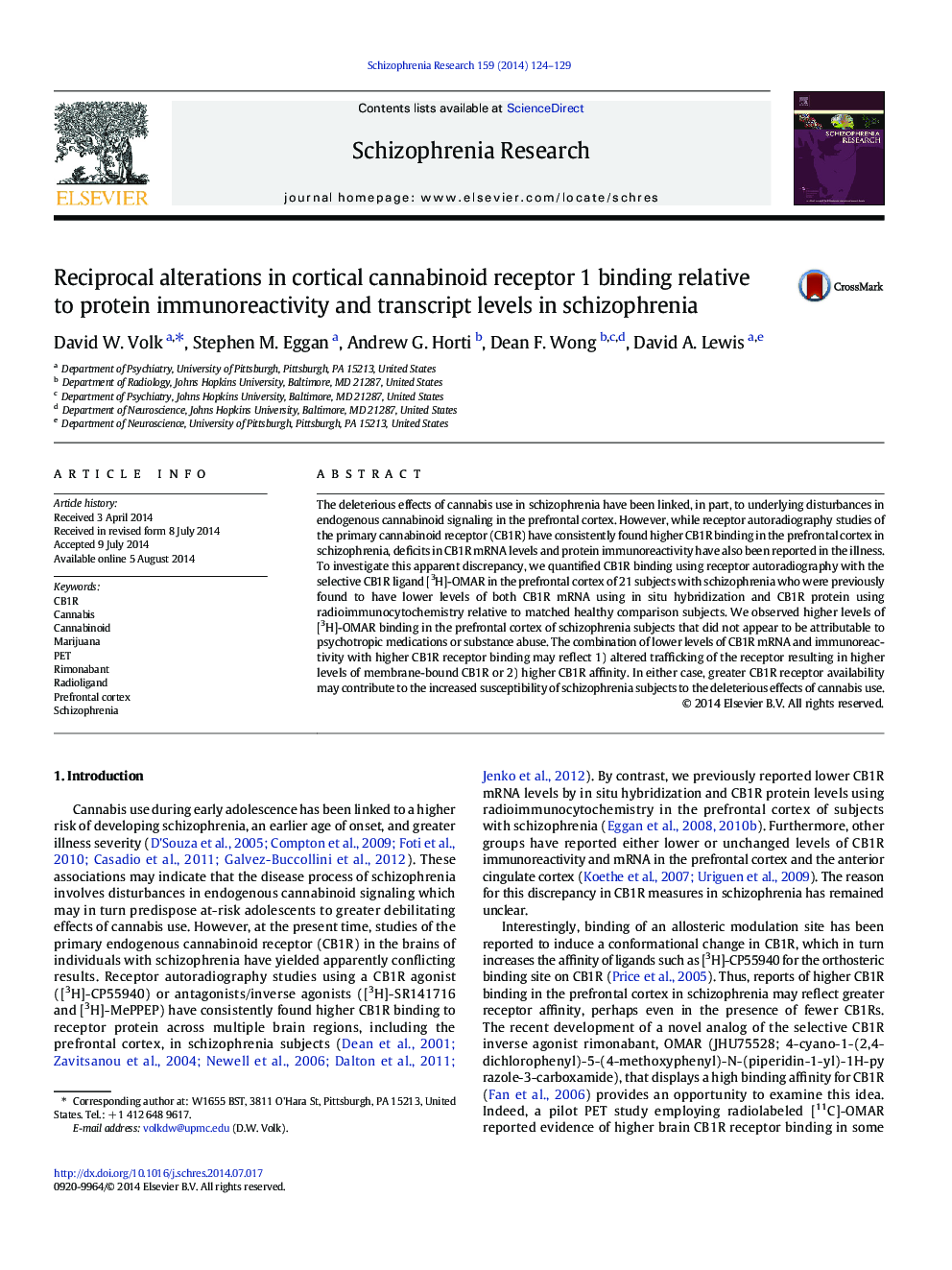| Article ID | Journal | Published Year | Pages | File Type |
|---|---|---|---|---|
| 10307725 | Schizophrenia Research | 2014 | 6 Pages |
Abstract
The deleterious effects of cannabis use in schizophrenia have been linked, in part, to underlying disturbances in endogenous cannabinoid signaling in the prefrontal cortex. However, while receptor autoradiography studies of the primary cannabinoid receptor (CB1R) have consistently found higher CB1R binding in the prefrontal cortex in schizophrenia, deficits in CB1R mRNA levels and protein immunoreactivity have also been reported in the illness. To investigate this apparent discrepancy, we quantified CB1R binding using receptor autoradiography with the selective CB1R ligand [3H]-OMAR in the prefrontal cortex of 21 subjects with schizophrenia who were previously found to have lower levels of both CB1R mRNA using in situ hybridization and CB1R protein using radioimmunocytochemistry relative to matched healthy comparison subjects. We observed higher levels of [3H]-OMAR binding in the prefrontal cortex of schizophrenia subjects that did not appear to be attributable to psychotropic medications or substance abuse. The combination of lower levels of CB1R mRNA and immunoreactivity with higher CB1R receptor binding may reflect 1) altered trafficking of the receptor resulting in higher levels of membrane-bound CB1R or 2) higher CB1R affinity. In either case, greater CB1R receptor availability may contribute to the increased susceptibility of schizophrenia subjects to the deleterious effects of cannabis use.
Related Topics
Life Sciences
Neuroscience
Behavioral Neuroscience
Authors
David W. Volk, Stephen M. Eggan, Andrew G. Horti, Dean F. Wong, David A. Lewis,
